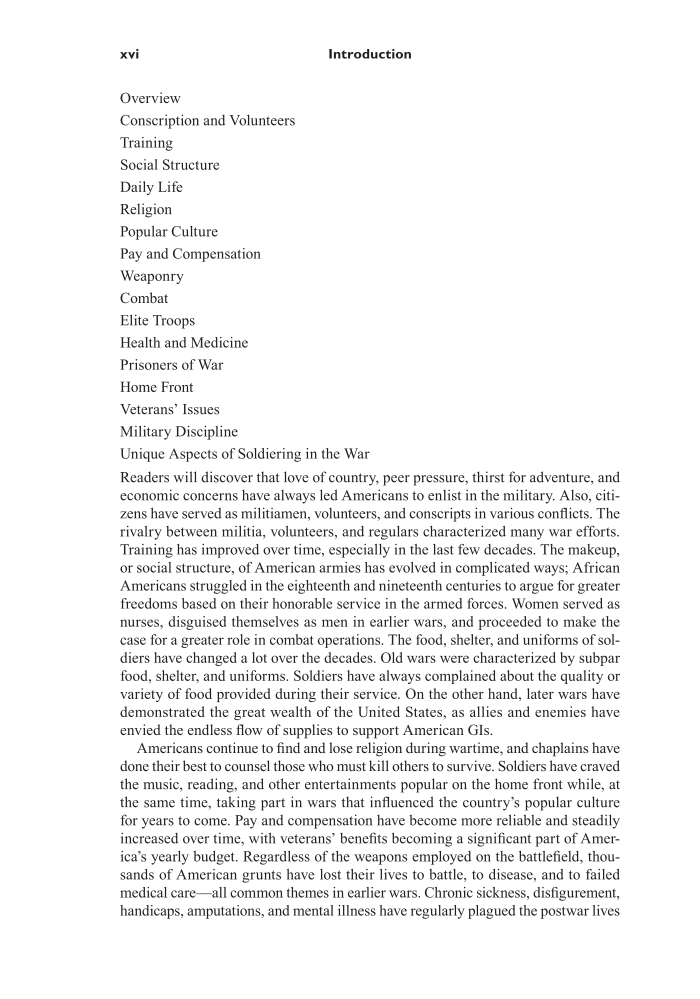xvi Introduction Overview Conscription and Volunteers Training Social Structure Daily Life Religion Popular Culture Pay and Compensation Weaponry Combat Elite Troops Health and Medicine Prisoners of War Home Front Veterans’ Issues Military Discipline Unique Aspects of Soldiering in the War Readers will discover that love of country, peer pressure, thirst for adventure, and economic concerns have always led Americans to enlist in the military. Also, citi- zens have served as militiamen, volunteers, and conscripts in vari ous conflicts. The rivalry between militia, volunteers, and regulars characterized many war efforts. Training has improved over time, especially in the last few de cades. The makeup, or social structure, of American armies has evolved in complicated ways African Americans struggled in the eighteenth and nineteenth centuries to argue for greater freedoms based on their honorable service in the armed forces. Women served as nurses, disguised themselves as men in earlier wars, and proceeded to make the case for a greater role in combat operations. The food, shelter, and uniforms of sol- diers have changed a lot over the de cades. Old wars were characterized by subpar food, shelter, and uniforms. Soldiers have always complained about the quality or variety of food provided during their service. On the other hand, later wars have demonstrated the great wealth of the United States, as allies and enemies have envied the endless flow of supplies to support American GIs. Americans continue to find and lose religion during war time, and chaplains have done their best to counsel those who must kill others to survive. Soldiers have craved the music, reading, and other entertainments popular on the home front while, at the same time, taking part in wars that influenced the country’s popu lar culture for years to come. Pay and compensation have become more reliable and steadily increased over time, with veterans’ benefits becoming a significant part of Amer i ca’s yearly bud get. Regardless of the weapons employed on the battlefield, thou- sands of American grunts have lost their lives to battle, to disease, and to failed medical care— all common themes in earlier wars. Chronic sickness, disfigurement, handicaps, amputations, and mental illness have regularly plagued the postwar lives
Document Details My Account Print multiple pages
Print
You have printed 0 times in the last 24 hours.
Your print count will reset on at .
You may print 0 more time(s) before then.
You may print a maximum of 0 pages at a time.







































































































































































































































































































































































































































































































































































































































































































































































































































































































































































































































































































































































































